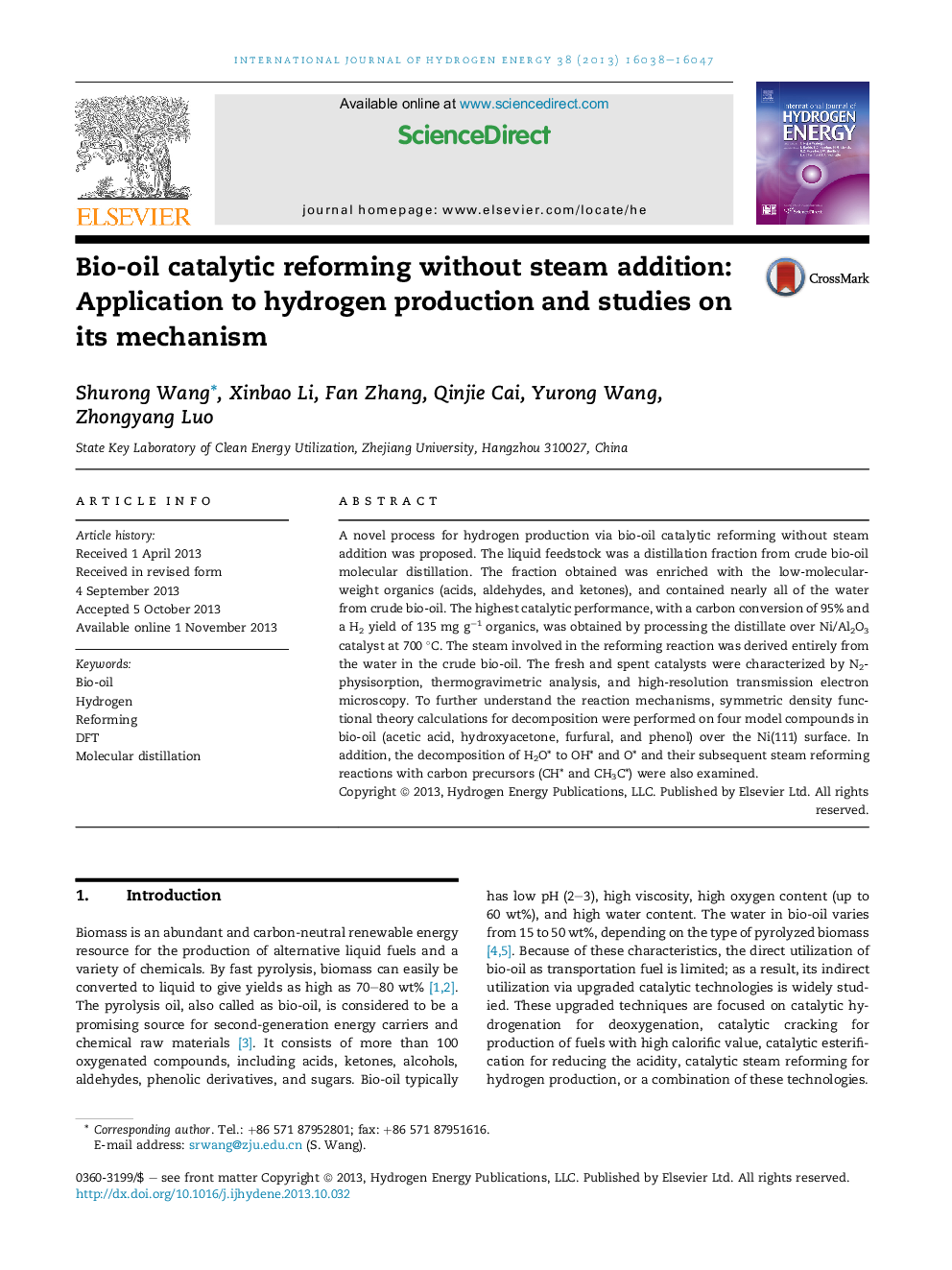| کد مقاله | کد نشریه | سال انتشار | مقاله انگلیسی | نسخه تمام متن |
|---|---|---|---|---|
| 1274165 | 1497509 | 2013 | 10 صفحه PDF | دانلود رایگان |

• Water-rich fraction was obtained via bio-oil molecular distillation.
• Hydrogen production via bio-oil reforming without steam addition was proposed.
• Organics adsorption and decomposition were performed by DFT calculations.
• Reactivity on Ni(111) is: furfural > hydroxyacetone > acetic acid > phenol.
A novel process for hydrogen production via bio-oil catalytic reforming without steam addition was proposed. The liquid feedstock was a distillation fraction from crude bio-oil molecular distillation. The fraction obtained was enriched with the low-molecular-weight organics (acids, aldehydes, and ketones), and contained nearly all of the water from crude bio-oil. The highest catalytic performance, with a carbon conversion of 95% and a H2 yield of 135 mg g−1 organics, was obtained by processing the distillate over Ni/Al2O3 catalyst at 700 °C. The steam involved in the reforming reaction was derived entirely from the water in the crude bio-oil. The fresh and spent catalysts were characterized by N2-physisorption, thermogravimetric analysis, and high-resolution transmission electron microscopy. To further understand the reaction mechanisms, symmetric density functional theory calculations for decomposition were performed on four model compounds in bio-oil (acetic acid, hydroxyacetone, furfural, and phenol) over the Ni(111) surface. In addition, the decomposition of H2O∗ to OH∗ and O∗ and their subsequent steam reforming reactions with carbon precursors (CH∗ and CH3C∗) were also examined.
Figure optionsDownload as PowerPoint slide
Journal: International Journal of Hydrogen Energy - Volume 38, Issue 36, 13 December 2013, Pages 16038–16047